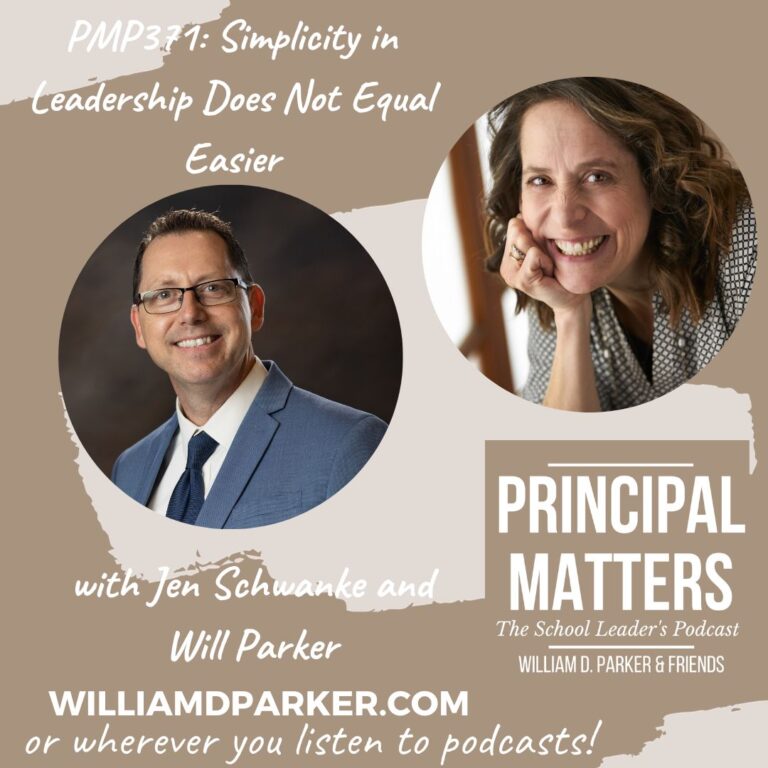Podcast: Play in new window | Download
A few weeks ago, I was invited to provide some virtual professional learning with a wonderful group of aspiring and assistant principals from Pecos Barstow-Toyah Independent School District, in Pecos, Texas.
As a part of our time together, I shared content from my book Principal Matters, including “8 Hats” that school leaders wear. For the sake of this podcast episode, I am including a shortened version of the introduction to the session. My hope is that you will find these takeaways helpful as you reflect on your own responsibilities as a school leader.
Here is a summary of the eight hats that all school leaders should expect to wear:
1. Coach
Someone has to make the final call, and as the principal, that will often be you. Like a good coach, you will need to understand the strengths and weaknesses of your team. You will need to listen to input from others. But ultimately, you will be the one who often makes many of the final calls in your building.
Coaches also set the tone, cast the vision, or help motivate their teams to action. Even if you are not a pep-talk kind of person, it is important that you are clear with direction, consistent with follow-through, and fair-minded in difficulties. Like it or not, others will look to you for direction and follow your lead. So plan to lead in a positive direction.
2. Manager
School leadership is much more than management, but it is still an important part of it.
Some principals are surprised at the amount of work required for supervision, personnel decisions, report generating, budget decisions, and schedule planning. If you are transitioning from the classroom, you are now responsible for an entire school.
You can’t manage a school without a great team.
One way I have tried to encourage focus in office management of our school, for instance, is by putting job responsibilities in writing. Each office staff member has key responsibility areas in writing so each of us know who is managing specific tasks throughout the year.
3. Counselor
Whether it is handling concerns of students, parents, teachers, or other school staff, a significant part of school leadership is learning to listen. I am not a counselor and do not pretend to be. But I have learned the importance of giving my attention to someone in need, providing them feedback, and helping them find solutions.
Sometimes people just need to be heard, and sometimes they need to be guided into finding their own solutions. My favorite Stephen Covey quote always comes into play when I talk about counseling: Seek first to understand before seeking to be understood.
4. On Duty
Like it or not, everyone is accountable to someone. Just because you are a principal does not mean you are on your own. You still answer to your superiors. You still answer to the state department. You still follow the same rules, regulations, policies, and laws your staff is expected to follow.
When you are absent for family sick leave, for instance, you fill out the same form your teachers fill out. I sign in every morning on the same sheet my teachers use for sign in. In fact, I am usually the first one to sign in. Principals are on duty just like everyone else.
5. Cheerleader
I am not sure I can emphasize enough the importance of keeping people informed. So often because you are on the front end of decisions or information coming to the school, you falsely assume others have the same information or context.
Here are a few ways I try to keep communication clear:
a. Be present and visible.
b. Follow up meetings with email summaries.
c. Email parents and teachers in group emails with school updates.
d. When someone is upset, call or see in person if possible.
e. Send photos and updates to your local media outlets.
f. Create a school newsletter so great events are published to a wider audience.
6. Servant-Leader
One aspect I appreciate about my current superintendent is his ability to roll up his sleeves and lend a hand. More than once, he has been seen helping out with grounds work, standing in the serving line at faculty meals, or organizing a tailgate party on game night.
Principals are not exempt from service. In fact, they should be on the front-line when it comes to helping others. This doesn’t mean you neglect the tasks of management, supervision, and meetings to do all maintenance tasks in your building. Instead, it means that at times, you will need to step in when there is a need and lend a hand.
More than once, I have cleaned up the spill in the commons. Working a mop is something I can still do while wearing a tie.
7. Individual
Sometimes school leaders forget that in order to serve others, you also have to invest in personal growth. In the wheel of life, if you pour the majority of your time and energy into work while neglecting other priorities, you will eventually burn-out. Your life also includes your family, finances, physical health, and spiritual growth.
Just like a seed grows best when planted in the right soil, you grow best when you cultivate each area of your life. When you take time to invest in the people, activities, and passions that make your heart sing, then you have the energy and motivation to lead others.
8. Team Player
Finally, a principal must remember he is not working alone. You are surrounded by teachers, students, or staff members who are talented, intelligent and creative. And you always accomplish more when pulling with a team than by yourself.
So you must not forget that you need others to be successful. And other need you too. Strong leaders do not push others. Instead, they lead and are followed.
As you set the tone for your building, remember you are doing this in partnership with others. Reminding yourself that you are part of team will keep you from the false belief that you are on your own. I heard someone say once concerning leaders: Tuck in your cape, you are not a super hero; you are on a team.
Conclusion
School leadership is a multifaceted calling whether you are a coaching, managing, staying accountable, communicating, serving, or working with a team. Ultimately, your goal is to create a safe and effective learning environment, no matter what hats you have to wear to reach that goal.
Now It’s Your Turn
This list is not exhaustive. What are some other roles or responsibilities school leaders must be prepared to handle? Thanks again for doing what matters!



